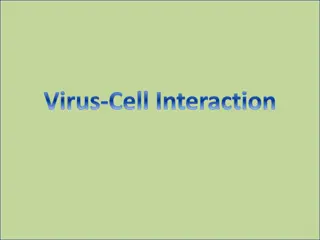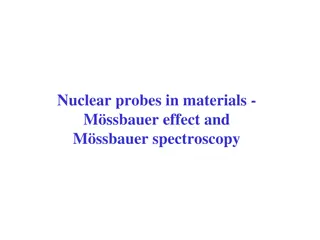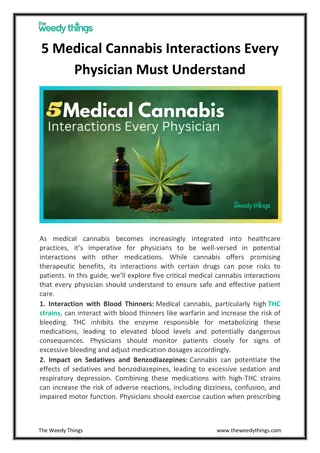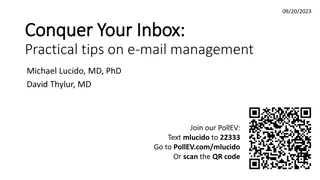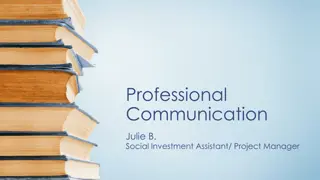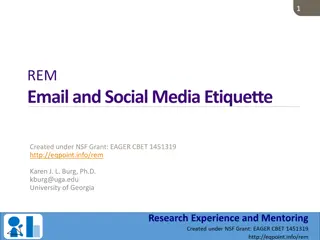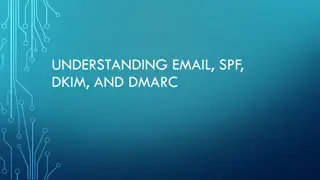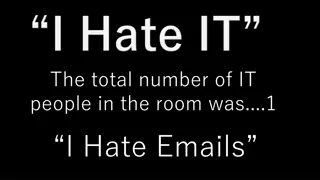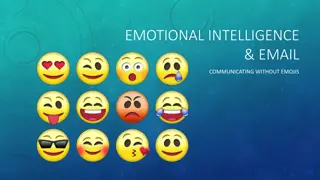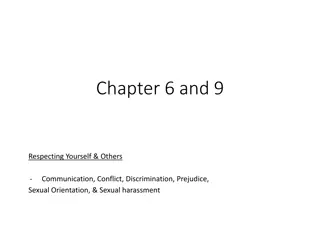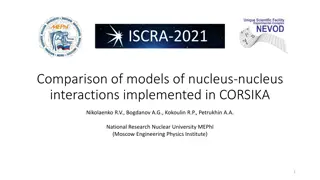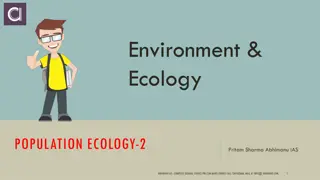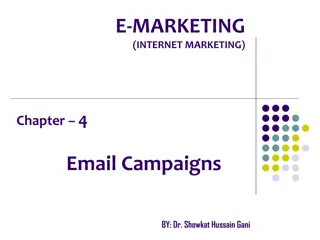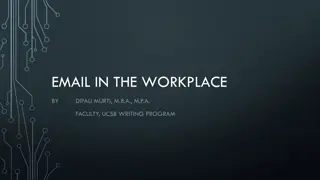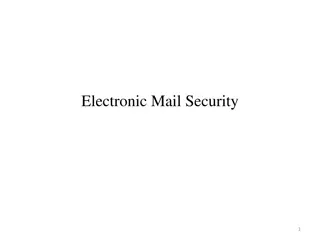Effective Email Communication Guidelines for Professional Interactions
Understand your audience, follow-up promptly, and avoid negative emotions in written communication. Communicate clearly, concisely, and professionally to achieve your communication goals. Utilize formal greetings, proper grammar, and clear email templates to ensure effectiveness in your email exchanges.
Download Presentation

Please find below an Image/Link to download the presentation.
The content on the website is provided AS IS for your information and personal use only. It may not be sold, licensed, or shared on other websites without obtaining consent from the author.If you encounter any issues during the download, it is possible that the publisher has removed the file from their server.
You are allowed to download the files provided on this website for personal or commercial use, subject to the condition that they are used lawfully. All files are the property of their respective owners.
The content on the website is provided AS IS for your information and personal use only. It may not be sold, licensed, or shared on other websites without obtaining consent from the author.
E N D
Presentation Transcript
- Who is your audience? Primary vs Secondary - What do they need to know? - What do they know? - What is the goal of this communication? - Formal greeting - Proper grammar - Email template - Be clear and concise - Avoid using slang/texting language
Subject Salutation with professional name "Dear Dr. Sparty" Warm introduction "I hope you are doing well!" Body Skimmability, frontload information, clear & concise Closing Email signature Blaire Crockett M.S. | Masters of Human Resources & Labor Relations, May 2022 Michigan State University (734) 945-0566 crocke53@msu.edu "ENG 800: Research Ethics "Sincerely", "Thank you"
- Aim to follow up within 1-2 business days - The sooner you can respond, the better - For urgent messages, include "Urgent" in the subject line - Allow 2-3 business days before following up - Adhere to business hours (Mon-Fri, 9-5pm) - "I hope you've had a great week! I am reaching out to follow up regarding the email I sent last week..."
- Avoid negative emotional language in written communication - Use the 24 hour rule - Ask a neutral party if your message is appropriate
- Know who your primary and secondary audiences are. - Understand the purpose of this communication. - Utilize the basic mechanics of an email - be clear and concise! -Follow up promptly. - Avoid emotions in written communication.


